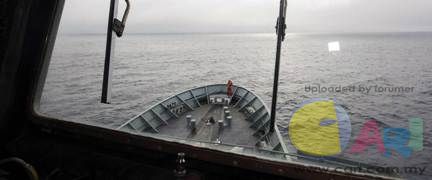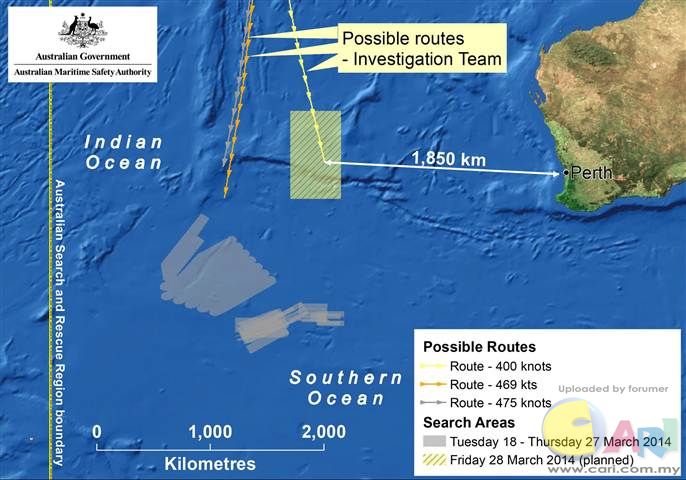 PERTH, Australia - The dramatic shift in the search zone for Malaysia Airlines Flight MH370 will make the task easier for air crews – but it also means investigators have lost valuable time while looking in the wrong place for more than a week. Australian authorities announced early Friday that they had abandoned the area that international teams have been scouring since March 20 and have begun another, nearly 700 miles to the northeast. The shift - based on updated advice from Malaysian investigators – is based on a “new credible lead” that the Boeing 777 was traveling faster than previously estimated, burning more fuel and crashing earlier than officials had thought. The more remote area that planes and satellites have focused on for eight days is now being discounted and ignored. “This is our best estimate of the area in which the aircraft is likely to have crashed into the ocean,” Martin Dolan, the chief commissioner of the Australian Transport Safety Bureau, told reporters. “We have taken account of drift info as well as the likely entry point of the aircraft into the water.” Missing Jet Search Area Shifts The new search zone, directly west of Perth, is better for two reasons. First, planes taking off from there can reach the search area faster. Even on the quickest of the search planes, a U.S. Navy P-8 Poseidon aircraft, it took three hours to get to the old search area. This flying time can now be almost halved, allowing for more time searching for debris. Second, the new zone does not suffer from the appalling weather experienced further south in “the Roaring Forties,” where rolling seas, gale force winds and low cloud made the old search area so difficult. On Wednesday, searching was suspended amid severe icing, turbulence and near-zero visibility.  Image: Satellite image shows area being searched on Friday GETTY IMAGES This handout satellite image made available by the Australian Maritime Safety Authority shows a map of the area being searched on Friday for missing Malaysian Airlines Flight MH370. Australian authorities rejected the suggestion that the past week’s searching has been a waste of time, stating at a news conference that “the search to date [is] what we had at the time.” But it is hard to come to any other conclusion except that - apart from ruling out the old area - they’ve wasted valuable time in the race to find the Boeing 777. Investigators are also under pressure to explain why it has taken nearly 21 days for a fresh analysis of the radar data to come up with such a dramatically different location. The Australians cautioned that the new search zone “remains a very large area” - at least 123,000 square miles, larger than New Mexico - and that “this has a long way to go yet.” However, in a subtle change of language, they talked about “the crash point” and “the entry point” rather than a debris field, suggesting they are more confident about the plane's final flight path and that they believe this really is the place where it went down. Ten planes were leaving Perth on Friday, heading for the new zone. Six ships, five of them Chinese, which were in the old area are now being re-tasked to sail north. Satellites are being re-tasked to photograph the new area. All the previous satellite images of potential objects – including a Thai image issued Thursday apparently showing around 300 pieces of possible debris – are now being discounted. By implication, those images were seeing ocean junk, not wreckage from a missing plane. And there was one further setback amid the dramatic news: the Australian naval vessel Ocean Shield, which will tow the U.S. black box "pinger locator" across the search zone, was meant to have docked in Perth early Friday. Instead, it will arrive “in the coming days,” Australian officials said. Why does this matter? By the time the locator is fitted and towed out to the new search area, the batteries in MH370’s black boxes will begin to fade and die, as they are designed to do after 30 days. We are now on day 21. The signal searchers are listening for will get weaker by the day. It may not have been efficient, but search now has a new life. Search crews are said to be reinvigorated. Visibility is good. For the relatives of those missing, this may be small comfort, but the net may finally be closing on Flight MH370. check out for video here: http://www.nbcnews.com/storyline ... earch-shifts-n65851
|
ADVERTISEMENT